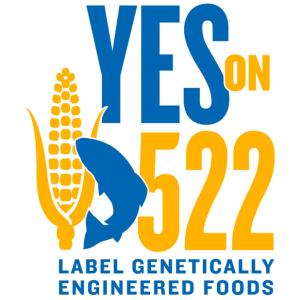As a Registered Dietitian, I’m deeply concerned about our food supply because it is increasingly expensive and degraded in nutrition. I’ve followed the movement to label genetically engineered (GE) foods since the labeling movements began in 2011. As a “food & nutrition expert”, it’s my duty to understand and observe our food manufacturing, food production, and food supply.
Like most voters and business professionals, I’m interested in spending less money on life’s basic necessities. You might be interested in knowing that labeling GE foods will not cost consumers any money. In fact, it will be a cost savings.
I’ll list the bullet points about which many consumers are unaware when it comes to labeling Genetically Engineered (GE) Foods.
64 other countries have labeled GE foods, including China, India and Russia. Why is the US so behind? #GMO http://t.co/kxto8trkqh
— Frances Arnold (@FrancesLArnold) November 3, 2013
- Labeling will NOT cost consumers money. Food manufacturers regularly redesign labels throughout the year. I-522 will not cause unnecessary redesigns or new costs to packaging.
- NOT having a label is COSTLY. The only way to avoid genetically engineered (GE) foods at this time is to purchase organic items, or those labeled “non-GMO project verified”. These foods are spendy, and many consumers cannot afford to make every food purchase organic. Labeling GE ingredients will remove the barrier for families who cannot purchase organic foods by making available the information about whether the food is GE.
- When trans fats were labeled, it helped consumers make more informed decisions about their food choices WITHOUT costing consumers an extra dime. Who didn’t like this was the food industry, as consumers were more cautious about purchasing foods with trans fats, which meant that profits were lost. The current GE labeling proposal will be the same as it was for trans fats.

- All foods that currently contain labels in the grocery store would have to disclose if the food came from GE sources. Human foods that do not already contain labels would not have to disclose if they came from GE sources. Pet food is not human food, and would not be labeled. Animals that were fed GE foods are NOT considered genetically engineered, and would therefore NOT be labeled as GE (such as meat, eggs, and dairy). However, meat that IS genetically engineered into existence WILL be labeled as GE. This means that when genetically engineered salmon is released – and it has been approved by the FDA to be released into the US food supply – it would have to be labeled as GE.
- 64 other countries have labeled GE foods, including China, India and Russia. Why is the US so behind? The 522 Initiative proposes labeling laws that are in alignment with the European Union’s labeling laws.
- Americans are eating an average of 193 pounds of genetically engineered foods every year, willingly or not. Labeling would afford people more choice in whether they consume GE foods without being forced into buying expensive organic foods in order to avoid GE foods.
- Contrary to the popular assumption that GE foods are “safe”, there are ZERO human health studies verifying that GE foods are actually safe for human consumption. It is unwise to introduce huge amounts of novel foods to the food supply (or to the environment) without being proven safe. Correlational data is currently being collected at the U of W to compare the rates of increased disease in the US with the increased intake of GE foods. At this time, Japan is “observing” the effect that GE foods have on American children over the long term. (Doesn’t that feel like Americans are the test subjects?)
-
Biotech companies (producers of GE foods) are allowed to design and anonymously conduct their own safety studies, and then selectively report their results to the FDA. The FDA classifies GE foods as “Generally Recognized as Safe (GRAS)”, which is a classification that is used to grant a food or food substance as “safe unless proven otherwise”. The FDA does not conduct its own studies about the health implications on GMO foods. Scientists who have conducted independent research in France and Germany found that GE foods fed to rats resulted in multiple organ damage, tumors, and fertility problems (but the biotech industry is quick to discredit any independent research and smear the reputation of scientists who challenge GE foods).
- The biotech industry has funneled over $17 million into campaigns to tell Washingtonians that labeling is bad. It would have been less costly to everyone to just allow the labeling to take place. Doesn’t this make you wonder about their motives? The grassroots movement to label GE foods is supported by ordinary citizens, who volunteer their time and money because they want to know what they are eating and feeding their children.
In summary, regardless of whether you feel fine about the existence of GE foods, there is no reason to NOT label GE foods. People simply deserve the right to know, just as we deserve the right to know how much sugar and salt is in our foods. (References are below.)
If you would like to review the podcasts I’ve published on this issue, you may find them below. There are more of them to come.
- Labeling Genetically Engineered Foods in Washington – I-522 interview
- Why Label Genetically Modified Foods?
- How you can help get GMOs labeled
- Unchecked genetic engineering is a huge risk
You might be interested to know that some GMO supporters are now encouraging the US to catch up to 64 other countries in GMO labeling.
References:
(1) Just Label It. “Mellman Survey Results”, Jan 2012. http://justlabelit.org/wp-
(2) Just Label It. “Labeling Around the World”. http://justlabelit.org/right-
(3) Environmental Working Group. “Americans Eat Their Weight in Genetically Engineered Food”, 15 Oct, 2012.
(4) Biotechnology and Genetic Engineering Reviews, Vol. 21, Nov 2004 http://www.saveourseeds.org/
(5) “The Future Of Food”, 2009
(6) Environmental Sciences Europe, Vol. 24:24 doi:10.1186/2190-4715-24-24, 28 Sept 2012. http://www.enveurope.com/
(7) National Public Radio, “As Biotech Seed Falters, Insecticide Use Surges”. 09 July, 2013
(8) Smith, JM. “Genetic Roulette”. Fairfield: Yes Books. 2007. p.10
(9) Puztai, Arpad, S. Bardocz and S.W.B. Ewen. “Genetically Modified Foods: Potential Human Health Effects”. Dept of Pathology, University of Aberdeen, Forresterhill, Aberdeen, UK. 2003
(10) NY Times. “U.S. Approves Genetically Modified Alfalfa”, 27 Jan, 2011. http://www.nytimes.com/2011/
(11) Bartolotto, Carole. “Is the movement to label GMOs anti-science?”, Huffington Post 14 June, 2013.
(12) The Ocean Conservancy, “Genetically Engineered Salmon”, http://www.oceanconservancy.
(13) Kaiser Permanente Newsletter. “What you need to know about GMOs”. Nov 2012. http://www.willamettelive.com/
(14) Gilles-Eric Séralini, Emilie Claira,, Robin Mesnagea, Steeve Gressa, Nicolas Defargea, Manuela Malatestab, Didier Hennequinc, Joël Spiroux de Vendômoisa. “Long term toxicity of a Roundup herbicide and a Roundup-tolerant genetically modified maize”. Food and Chemical Toxicology Volume 50, Issue 11, Nov 2012, Pgs 4221–4231
(15) Columbia River Inter-Tribal Fish Commision, statement on GMO salmon. http://www.critfc.org/
(16) Bartolloto, Carole. “How to avoid genetically modified foods”, Huffington Post. 9 July, 2013.
(17) American Academy of Environmental Medicine, GMO Position statement: http://www.aaemonline.org/



